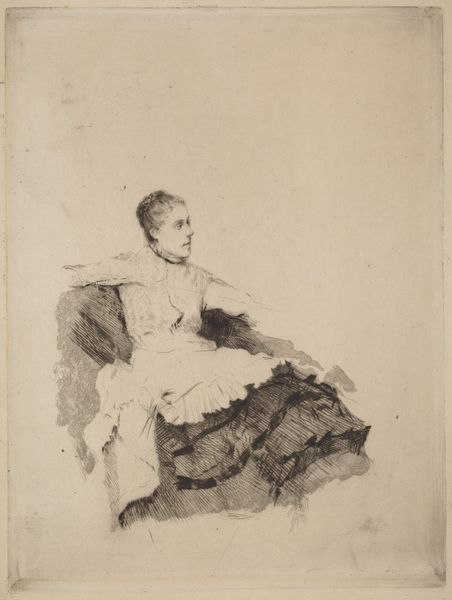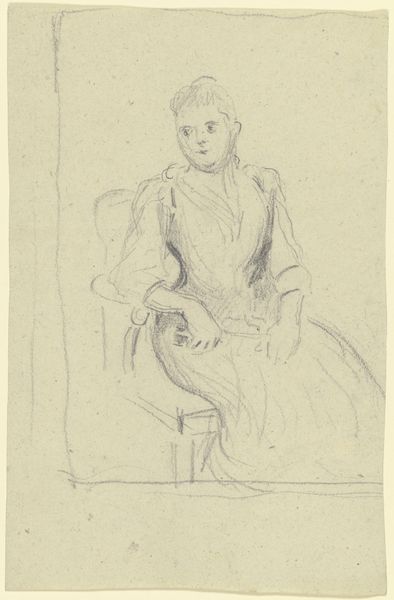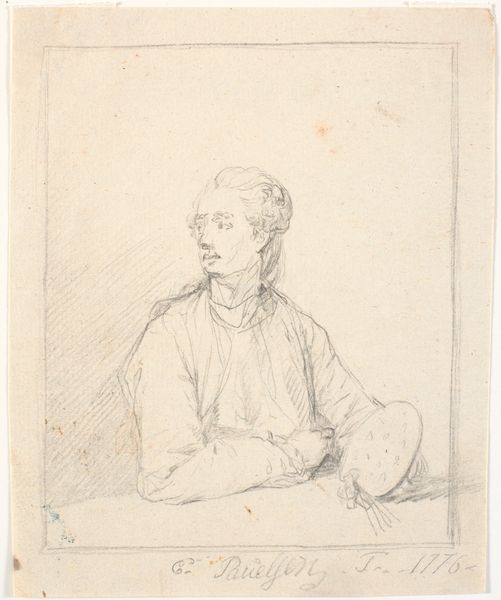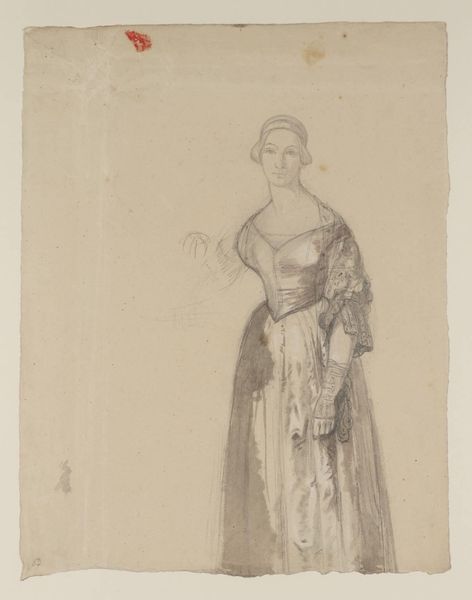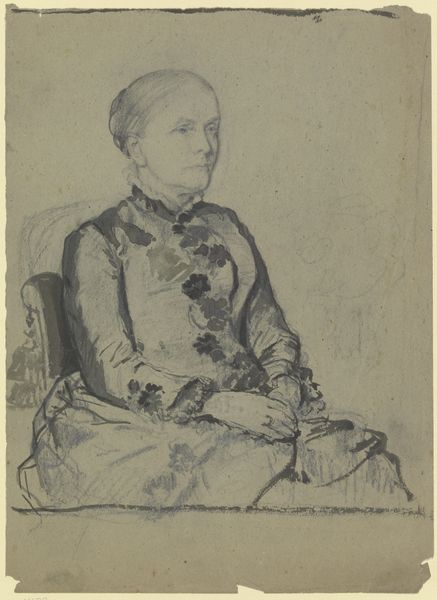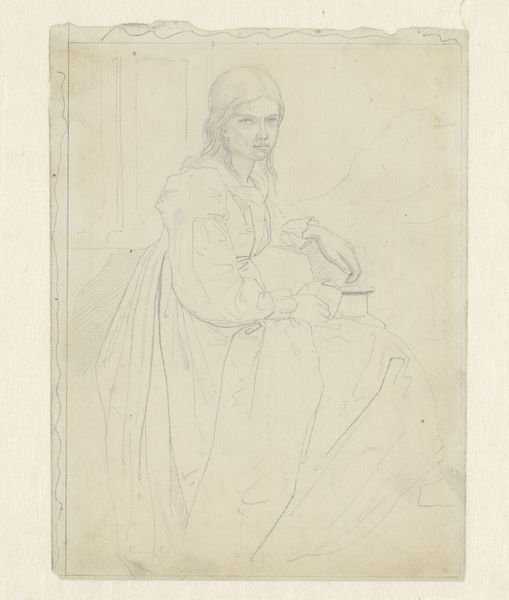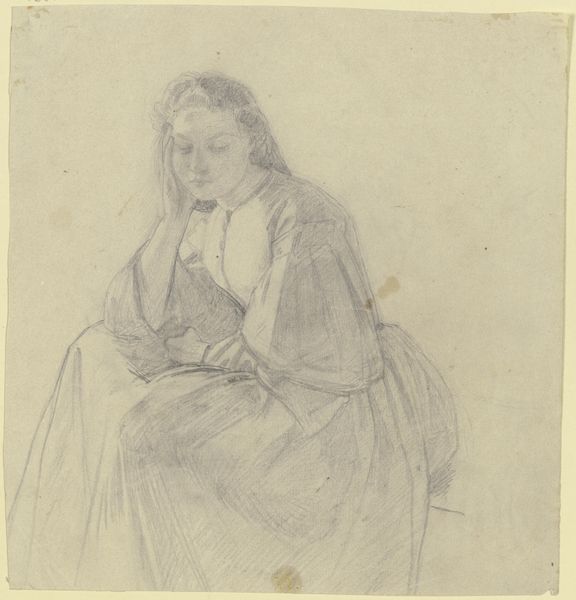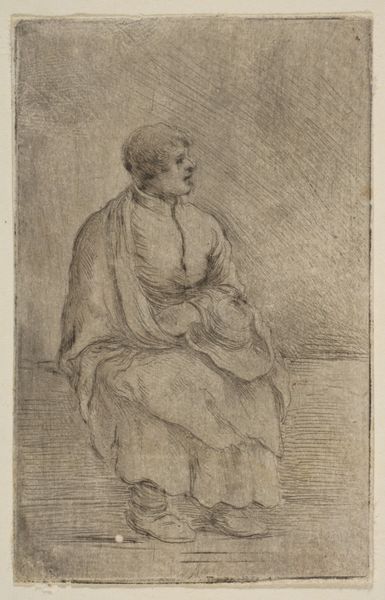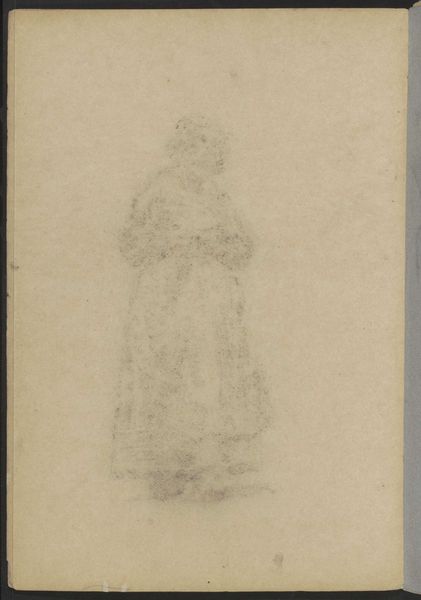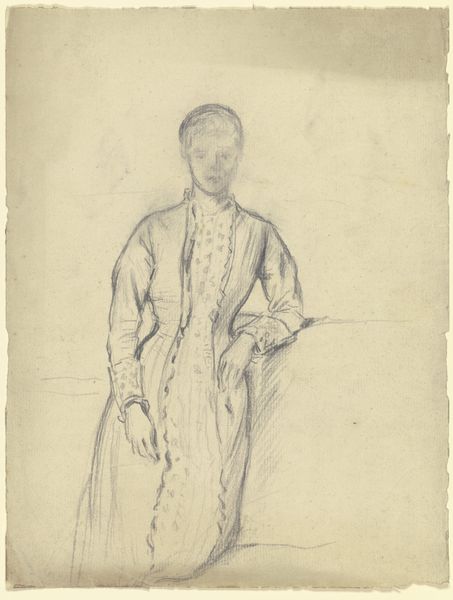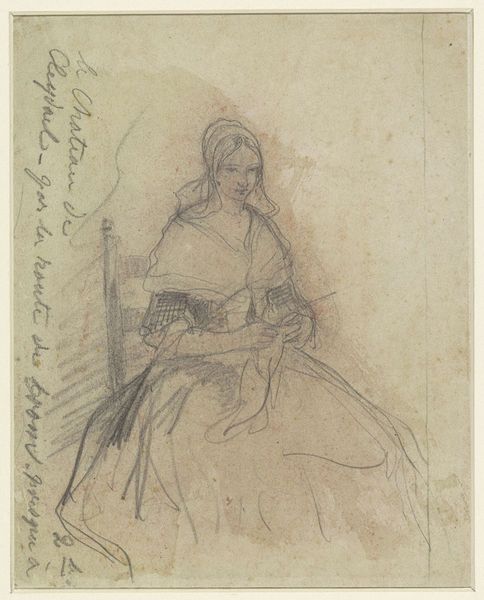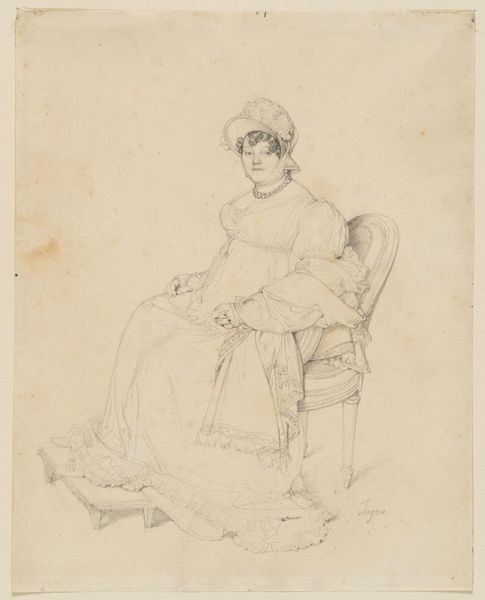
drawing, pencil
#
portrait
#
pencil drawn
#
drawing
#
figuration
#
pencil
#
realism
Copyright: Public Domain
Curator: Here we have "Sitting Woman," a pencil drawing currently held at the Städel Museum, by Otto Scholderer. The first thing that strikes me is the tentative nature of the lines. What about you? Editor: Melancholy. It’s immediate. Her pose, the downcast eyes...it speaks of introspection, almost sadness. Are we certain there is a completion date on this work? It has the quality of an intimate study. Curator: We don’t have a firm date, you are correct, which leaves us speculating. Look at the grid visible beneath the image – it suggests a process of careful scaling or perhaps an abandoned attempt to transfer this sketch onto a larger canvas. Also, I find it revealing to consider the artist's choice of a pencil – a readily available and relatively inexpensive tool. Editor: That gridded base almost speaks of the figure imprisoned within her class – the constraints of the age are legible upon it. But observe the detail lavished on her dress – the ruffles and folds hinting at a certain societal standing – a delicate prison made all the more visible through her gaze and bearing. Curator: Precisely, it indicates Scholderer’s interest in the socio-economic realities underpinning portraiture. Consider also the physical act of creating this drawing. The artist had to acquire the pencil, the paper. Did he prepare his own drawing media or purchase pre-made supplies? Each decision, each act of labor contributes to the final piece, consciously or unconsciously. Editor: Yes, and these details are telling - but I also think of the historical role of female figures seated. They were allegories of virtues like patience and contemplation and therefore served as tools for moral education. What virtues do you see reflected by Scholderer? Curator: A frank portrayal of bourgeois life, maybe, but far from celebrating bourgeois ideology. This isn't the slick, celebratory work of a society painter. I see Scholderer drawing attention to the sitter’s materiality. She exists in a world shaped by objects, production, and the societal conventions evident in her posture, but the method calls this world into question. Editor: A compelling intersection of form and critique – a conversation initiated by the artist and now prolonged by us. Curator: Indeed. Every mark carries history. Thank you.
Comments
No comments
Be the first to comment and join the conversation on the ultimate creative platform.

